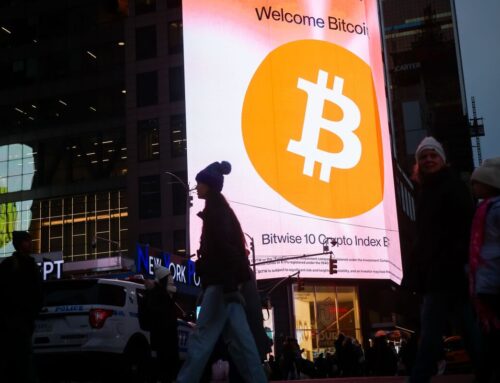$5,000 Calling: Will Pectra Lift Ethereum To Its Next All-time High?
April 22, 2025
After losing more than half its value for the year-to-date, sagging Ethereum (ETH) could be readying for a resurgence.
On May 7th the number two blockchain’s long-awaited Prague-Electra (Pectra) upgrade will leave the testnet and move to go-live. It promises to improve user experience, enhance network efficiency, lower gas fees and make life easier for institutions looking to bring assets and services into the DeFi ecosystem.
Removing barriers to entry for TradFi is crucial. Pectra accommodates bigger staking positions by reducing the need for multiple network nodes. With a less onerous process, Ethereum caretakers hope to create stronger liquidity lockups and an environment conducive to whale movement.
If institutional investors can reduce cost/effort and the overall user experience improves, on-chain activity should rise, lifting Ether’s price in the process.
Or so the thinking goes. Will Pectra’s improvements return ETH to its all time high of $4,700 – and beyond? Ethereum’s post-upgrade price curve will be one of 2025’s crypto market metrics to watch.
Ethereum’s latest re-tooling activates 9 individual Ethereum Improvement Proposals (EIPs) wrapped together in two packages called Prague and Electra.
The EIPs in Prague focus on Ethereum’s execution layer, while Electra’s package of changes address the consensus layer.
Together they build on previous attempts at enhancing network efficiency via ‘danksharding,’ a mechanism for improving scalability, and rollups, which aggregate multiple transactions into a single batch for processing off-chain.

In the works for more than a year, Pectra will mark a milestone in the blockchain’s ongoing roadmap and the biggest technical upgrade Ethereum’s caretakers have ever attempted.
Ethereum’s blockchain currently caps a single validator stake at 32 ETH. For bigger positions this forces the trading entity to run more validator nodes, adding operational cost.
Under EIP-7251, the maximum rises to 2048 ETH, addressing the needs of large stakers, staking pools, and validator operators by letting them harmonize up to 64 validators into one, streamlining management and reducing operational costs. The minimum threshold will stay put at 32 ETH to avoid penalising smaller operators and individuals.
At time of writing, Ethereum had over 1,062,847 active daily validators – and the number keeps going up.
Too many can overwhelm the network with high computational and bandwidth demands, leading to congestion and higher gas fees.
Pectra starts by improving the user experience for traders, DeFi users, and developers. EIP-7702 will simplify multi-step DeFi trades by bundling several actions into a single transaction. It will also enable gas fee abstraction, which allows one user to ‘sponsor’ (assume responsibility for) another user’s gas fees.
A new feature called Privilege De-escalation will add more condition-met spending options to smart contracts, accommodating Ethereum’s push to improve DeFi automation. EIP-2537 will strengthen security by adding to the blockchain’s zero-knowledge cryptography.
Pectra also takes Ethereum closer to full danksharding, a method for speeding up communication between the base Layer 1 (L1) network and Ethereum’s Layer 2 (L2) blockchains. A previous EIP, EIP-7594, enabled ‘proto-danksharding’ and dramatically reduced L2 gas fees. It works by pulling data into “blobs” that only persist while actively needed, enabling more network operations to be processed in parallel.
EIP-7594 will introduce a new protocol called PeerDAS which lets network nodes to perform operations using only a subset of blob data, allowing more data to be processed per block and freeing-up compute for more complex DeFi transactions – without degrading network performance or raising gas fees.
In a research note published last October, Galaxy’s VP of research Christine Kim wrote that L2-focused upgrades like Pectra ‘matter more’ to Ethereum.
“Improving UX, interoperability, decentralization, and security are likely to have the most effect on ETH’s value as the revenue of Ethereum will likely be driven by user activity on L2s going forward.”
Pectra’s go-live has been pushed back several times and the uncertainty around its timing hasn’t helped ETH’s steep Q1 descent.
Now that a firm date is in the diary, Ethereum — the backbone of DeFi — hopes to benefit from Pectra’s promised uplifts to efficiency and flexibility. Traders hope it will mark the start of ETH’s next bullish trend.
Market News and Data brought to you by Benzinga APIs
© 2025 Benzinga.com. Benzinga does not provide investment advice. All rights reserved.
Search
RECENT PRESS RELEASES
Related Post




